What is Eating My Zinnia Leaves? The zinnia plant is an effortless plant to grow.
However, when growing these beautiful plants outside in your garden, you might face some issues trying to keep your zinnia leaves safe from pests and predators.
Here I will tell you exactly what is eating your zinnia as well as provide you with some tips to prevent this from continuing.
Table of Contents
What is eating my Zinnia leaves?
Aphids, caterpillars, slugs, earwigs, and beetles are the most common culprits that eat your zinnia leaves. When identifying what type of pest is eating a zinnia plant, one must look at the damage done to the leaves. Different pests have different eating habits and therefore they leave different patterns on the leaf.
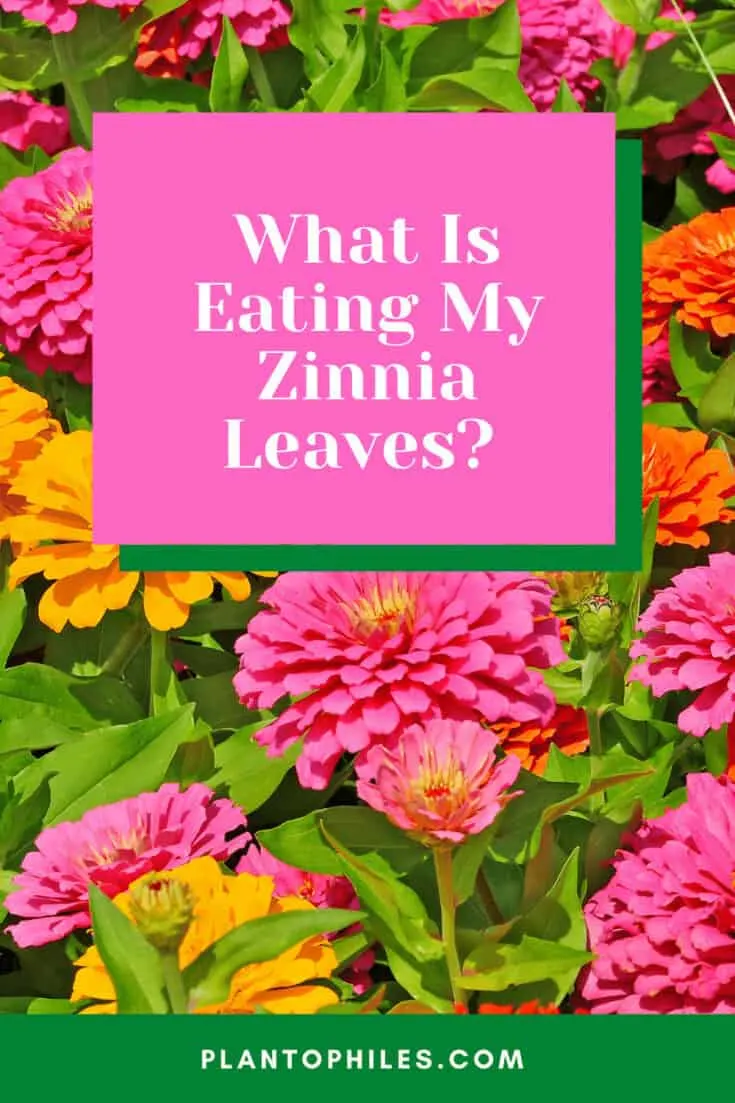
What Is Eating My Zinnia Leaves?
Aphids on Zinnia leaves
Aphids are one of the most common culprits eating your zinnia leaves.
The Black Bean aphid, in particular, is the most common aphid you will find feeding on your zinnia leaves.
The black Bean aphid’s appearance varies from dark green to a sharp black with yellow legs. These insects are very small and are oval-shaped.
If you notice any insects that fit this description I would advise you to immediately remove them!
Aphids reproduce very quickly so if the issue is not resolved it will only get worse and your zinnia plant may wilt and die.
If you are unable to find any aphids, you can assess the damage of the leaves to identify if aphids are the culprit.
Aphids cause sucking damage on leaves. This damage does not usually create holes in the leaf but rather discolors the leaf and causes leaf curl as well as deformed leaves.
If you think aphids might be eating your zinnia leaves, then the best remedy is to spray your plants with a mixed solution of neem oil, soap, and water.
This solution must be sprayed at least three times a week to remove the aphids.
It would also be beneficial to spray your Zinnia leaves with a high-pressure hose as this will push the pests off your plant.
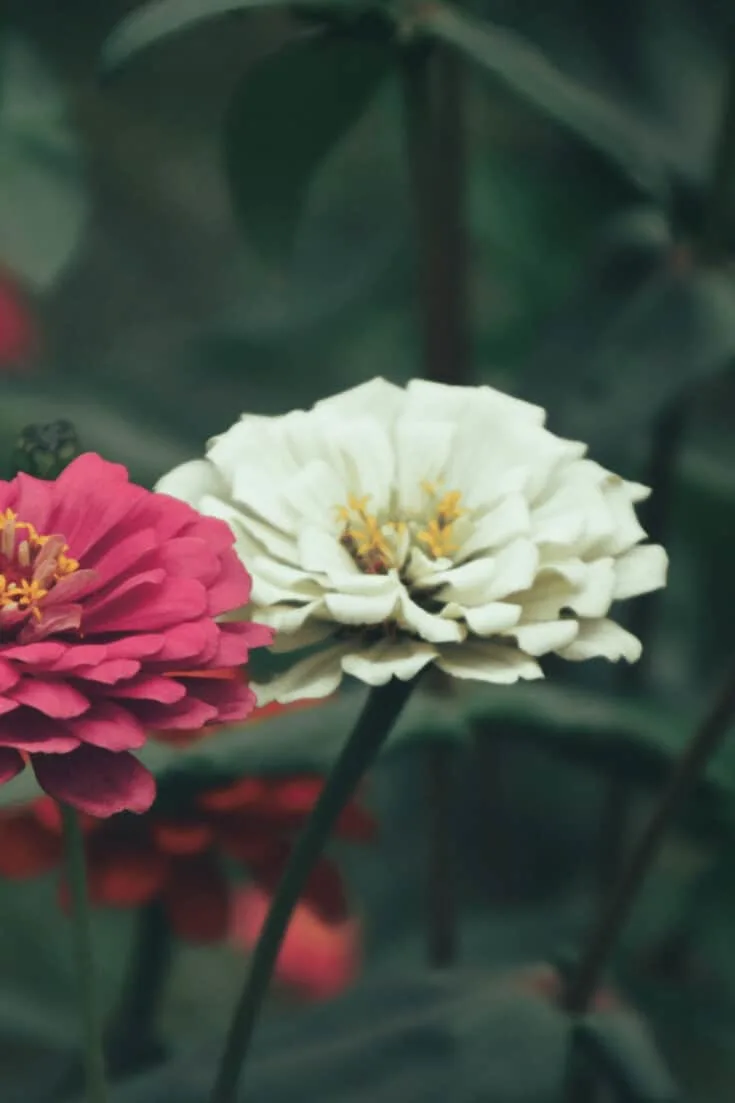
Aphids reproduce quickly and are a threat to Zinnia leaves
Caterpillars are eating my Zinnia
Caterpillars can be an absolute nightmare to have in your garden as they eat almost anything!
The Zinnia plant attracts these pests with its bright colors and sweet nectar and is, therefore, a massive target for caterpillars.
Caterpillars can often be seen feasting on your pea plant.
If this is the case then simply handpick the caterpillar and place it elsewhere.
The majority of caterpillars eat at night so you might not always see the caterpillar.
When the leaves of your Zinnia look as if they have been chewed in a circular pattern and if there are medium to large holes in the leaf of the plant, you might have a caterpillar problem.
If caterpillars appear to be the culprit then the best remedy for this is to spray a solution of neem oil, soap, and water on your plants.
I would also advise you to put cardboard at the base of your plant acting as a physical barrier.
The most common worms that feed on Zinnia leaves are cutworms, leafrollers, and armyworms.
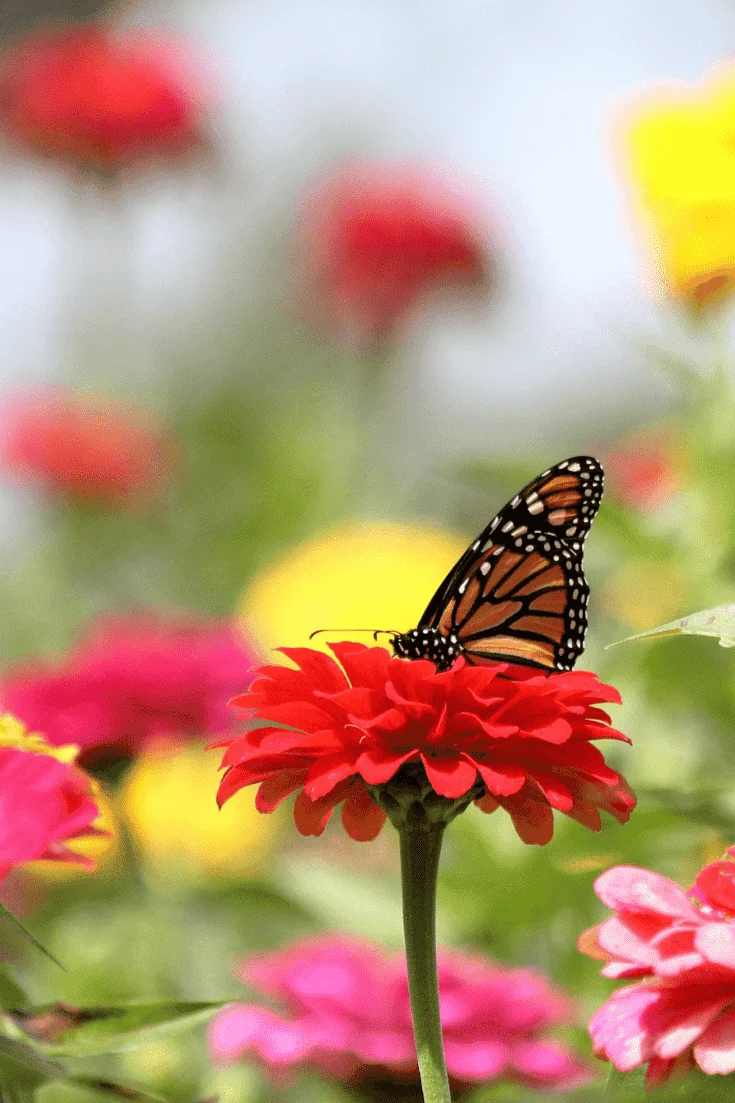
The bright colors of Zinnia plants attract pests such as catepillars
Slugs and snails eat Zinnia leaves
The next common culprit that could be eating your zinnia leaves is the pesty slug or snail.
Slugs and snails feed on almost all leaves and flowers and can be a huge problem for many gardeners.
If this issue is not remedied the slugs or snails will devour most of your plant causing it to wilt and die.
Snail and slug damage can be identified by looking for large raggedy holes in your zinnias leaves.
The snails’ and slugs’ feeding habits will create large holes similar to those of a caterpillar. The leaves will appear to be more chewed up.
Another way to identify slugs and snails is to look for slime trails on and around your plant.
Slugs and snails lay their eggs and hatch their eggs very quickly if this is not resolved there will be an infestation in your garden and your plants will suffer from these hungry pests.
The best remedy to eradicate these pests is to set up a beer trap.
Place a container full of beer by your zinnia plant. the scent will attract the snails and slugs and the beer solution will exterminate them.
A more humane option is to place pencil sharpening or sandpaper at the base of your plant to repel the snails and slugs.
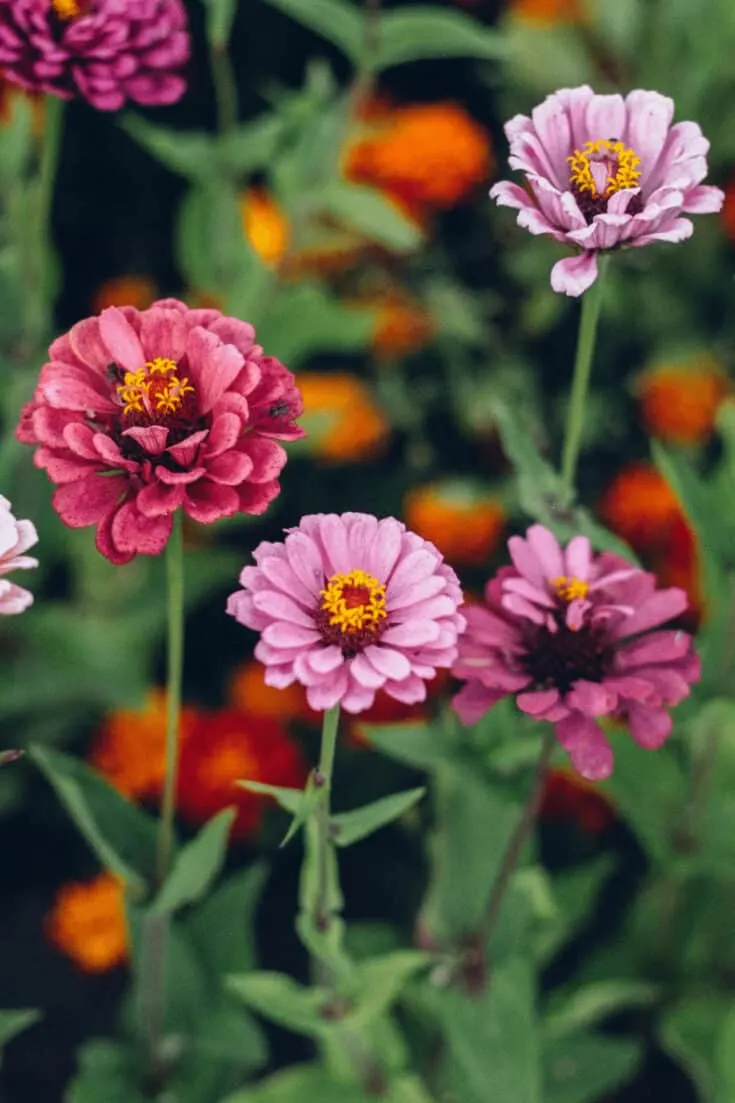
Slugs and snails are a big problem in most gardens and won’t spare your Zinnia plants
Earwigs on Zinnia
Earwigs are tiny brown insects with two pincers and a thin pair of wings the insects are not poisonous but they can be harmful to your zinnia plant.
These pests will chew holes on the sides of your zinnia leaves and in the center.
The holes are small in size compared to that of a caterpillar or snail.
The best way to eradicate earwigs is to mix a solution of 70% alcohol and water.
The solution should be 1 part alcohol and one part water. Alcohol such as isopropyl works very effectively.
Another more simple remedy is to layer petroleum jelly on the stem of your zinnia plant. this will prevent the earwigs from crawling up the stem to get to your leaves.
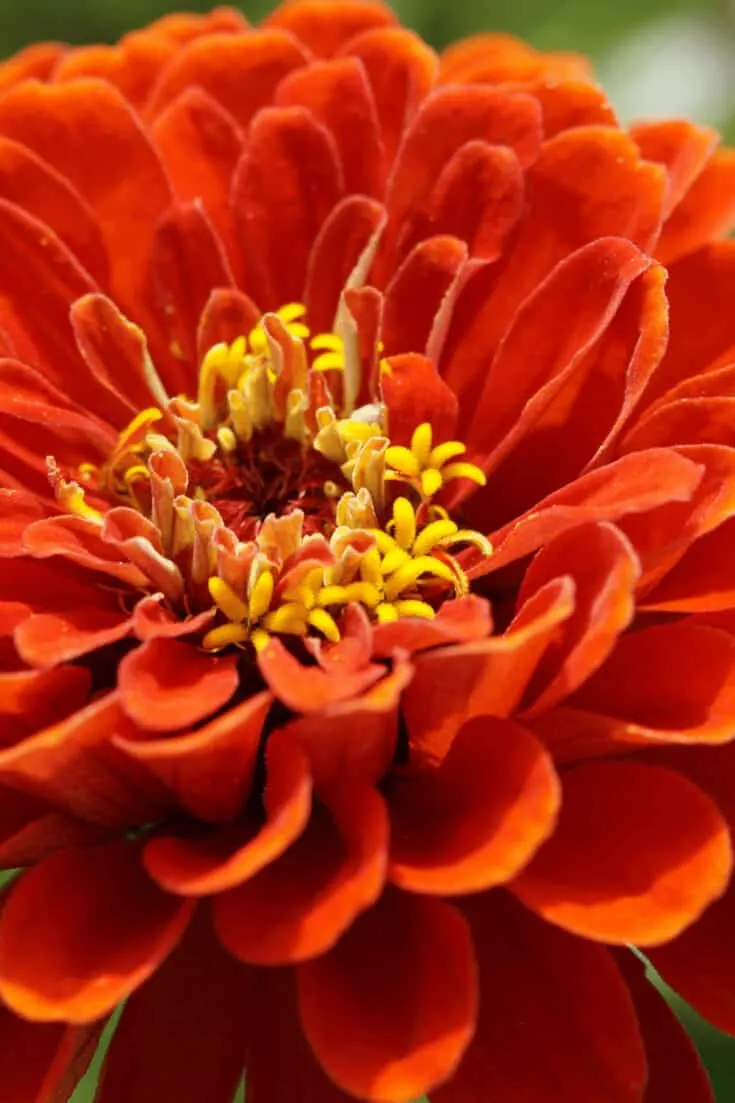
Earwigs are eating your Zinnia leaves
Zinnia infested by Beetles
The Japanese beetle is an insect that not only attacks the leaves on the zinnia plant but also attacks the flowers of the zinnia.
These beetles borrow into the flowers causing mass damage to your plant.
These beetles are difficult to identify but on average they have a dark green metallic body with thin copper wings.
If you find a beetle-like in your zinnia plant I would advise you to spray neem oil and water on your plant.
The neem oil will prevent the beetle from feasting and it will also cause the beetle’s eggs to be infertile and they will not hatch.
Zinnias are also susceptible to powdery mildew according to the University of Florida.
However, the same article also states some good news.
Newer Zinnia cultivars have been created that are immune to powdery mildew.

Daniel has been a plant enthusiast for over 20 years. He owns hundreds of houseplants and prepares for the chili growing seasons yearly with great anticipation. His favorite plants are plant species in the Araceae family, such as Monstera, Philodendron, and Anthurium. He also loves gardening and is growing hot peppers, tomatoes, and many more vegetables.


